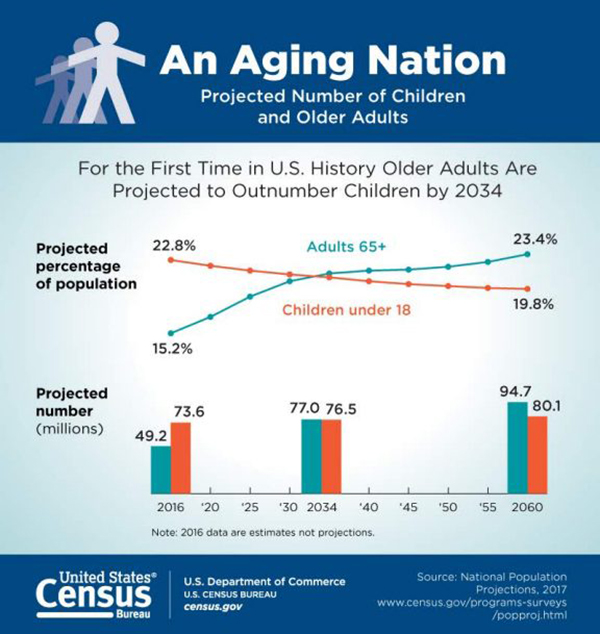In the United States, folks over 65 will soon outnumber those under 18 for the first time due to aging of the large Baby-Boomer generation. The cross-over is projected to occur around 2034, according to the US census. As such, there is an increasing need for healthy and safe memory care and assisted living facilities around the country. Adapted buildings are perfect resources for this demand.

One solution is adaptive reuse: renovating existing buildings for a new purpose. While this can pose unique design challenges, it is a more sustainable option and can be more cost-effective than building from the ground up. Less energy is spent demolishing and rebuilding, less waste is accumulated from demolished materials, fewer new materials are used, and there is less impact on land and ecology than developing a previously undeveloped site. The affordability of adaptive reuse is especially true when land, labor, material, and construction costs are high. Data shows that affordability is key as most older adults begin to live on fixed and modest incomes.

Adapted Buildings
Many buildings appropriate for adaptation may be lying vacant due to changes in demographics and cultural trends. Office buildings have some of the highest commercial vacancy rates as the capacity for working remotely and the availability of coworking spaces increase. Changing and moving business needs are leaving small-scale office buildings in want of a new purpose. Similar trends exist for small-scale, independent hotels, and motels as Airbnb and other short-term rental companies gain popularity and choices in travel change. In some areas, indoor shopping malls face similar outcomes with online shopping on the rise. (Additional commercial vacancy rate data may be found at: https://www.fortunebuilders.com/commercial-real-estate-market-outlook-vacancy-rates-expected-decline-29052/)
Schools are also left abandoned around the country. In some cases, these are large public schools vacant in response to limited funding and district consolidation. In others, they are small private schools. This may be especially true for those affiliated with churches or religious organizations that are also experiencing aging congregations and have less demand for a community school. As people move around and demographics change, some areas have fewer young residents than they once did. When Baby Boomers were young, many schools were built to accommodate them. Now, the younger generations are smaller, and Boomers are aging, many requiring more specialized care.
Building Opportunities
Assisted living may be a natural progression for many of these unused buildings. Offices or classrooms can be combined or separated to create living units. Adapted buildings have spaces for community amenities that often already exist in the form of cafeterias or food courts, break rooms, auditoriums, gyms, lobbies, libraries, etc. and can be converted into areas for eating, activity, and fitness spaces, or group living rooms. With the current COVID-19 impact on senior living facilities, new ways of designing these reuse centers will be vital to providing healthy centers for patients and healthcare providers.
Demographic data shows that the American population is getting older, people are living longer and on limited incomes. There is an increasing demand for affordable, supportive housing for aging adults. Adaptively reusing existing vacant buildings may be a cost-effective and appropriate way of providing a solution to this need while also giving new life to old buildings.
To learn more about assisted living facility design we invite you to click on our design page.




